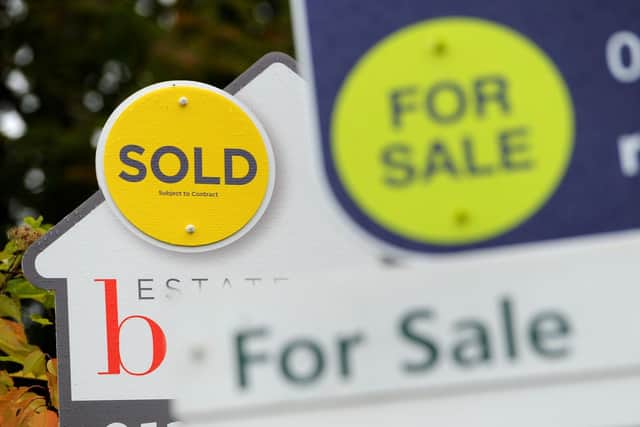House prices see biggest slump since 2008 financial crash, as manufacturing gloom deepens
The gloomy economic news came as the manufacturing index showed the downturn inUK output deepened last month.
And demand from overseas exporters fell for the 16th consecutive month, according to the S&P CIPS UK Manufacturing Purchasing Managers’ Index (PMI).
Advertisement
Hide AdAdvertisement
Hide AdThe manufacturing sector has been in negative territory for 10 months in a row, a prolonged dip in demand seeing a huge fall-off in orders. It comes despite supply-chain issues beginning to ease.


The PMI showed a reading of 47.1 in May, down from 47.8 in April. Any score above 50 indicates a sector is growing, while anything below means it is contracting.
In the property market, Nationwide warned headwinds were likely to strengthen in the short term.
Property values fell by 3.4 per cent annually in May, marking the biggest drop seen since July 2009 when an annual fall of 6.2 per cent was recorded, Nationwide said. The average house price fell by 0.1 per cent month on month, following a 0.4 per cent monthly increase in April.
Advertisement
Hide AdAdvertisement
Hide AdThe average house price in May was £260,736, according to Nationwide.
Robert Gardner, its chief economist, said: “Average prices remain 4 per cent below their August 2022 peak.
“Bank of England data had shown some signs of recovery in housing market activity, although the number of mortgages approved for house purchase in March was still around 20 per cent below pre-pandemic levels.”
He added: “Headwinds to the housing market look set to strengthen in the near term. While consumer price inflation did slow in April, it was a much smaller decline than most analysts had expected.
Advertisement
Hide AdAdvertisement
Hide Ad“As a result, investors’ expectations for the future path of the base rate increased noticeably in late May, suggesting it could peak at around 5.5 per cent, well above the 4.5 per cent peak priced in late March.
“Furthermore, rates are also projected to remain higher for longer.
“If maintained, this is likely to exert renewed upward pressure on mortgage rates, which had been trending down after spiking in the wake of the mini-Budget in September last year.”
But while Britain’s economicsituation showed few signs of slowing, there were pointers of more optimism on the Continent. Europe inflation saw a significant drop to 6.1 per cent.
Advertisement
Hide AdAdvertisement
Hide AdThe annual figure in May eased from 7 per cent in April for the 20 countries that use the euro, the European Union’s statistical agency Eurostat said yesterday.
But economists said it would be many months before disgruntled consumers saw more normal levels of inflation reflected on price tags in shops.
Inflation here has fallen in recent months as well, with the most recent rate for April showing 8.7 per cent.
Comment Guidelines
National World encourages reader discussion on our stories. User feedback, insights and back-and-forth exchanges add a rich layer of context to reporting. Please review our Community Guidelines before commenting.
